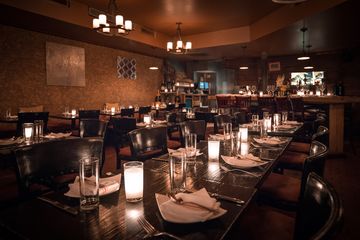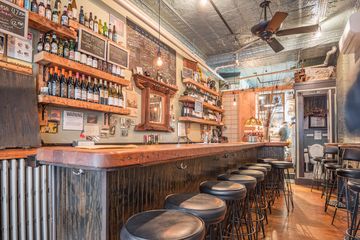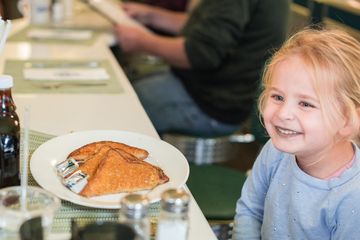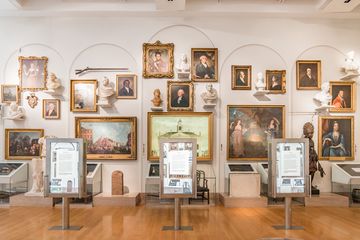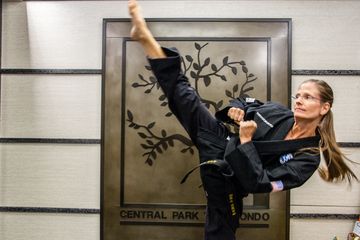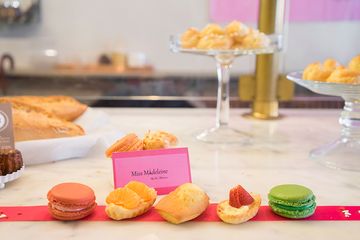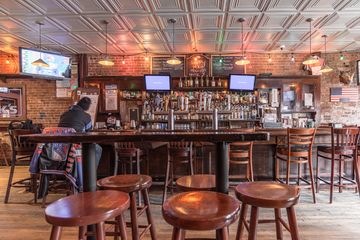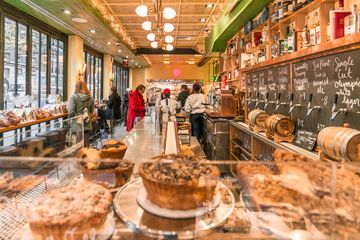The story, or shall I say, the saga, for Gerald and his wife, Peggy, might be the most moving one that I have heard from business owners on the side streets of Manhattan. Enduring multiple setbacks and disappointments - both in New York and Paris - the loving couple nevertheless pursued their ultimate dream of opening a pastry shop. Through determination, separation, and very hard work, in 2017, the two have finally opened their doors to the Upper East Side bakery, Miss Madeleine. Gerald and Peggy Hudeau left Guadeloupe in 2012 with the goal of coming to the United States to begin a new life by opening their own company. With five children in tow, they were forced to stop in Paris to obtain their visas. It took over one year to receive this visa, however, it was only granted to Gerald. He chose to come to New York, on his own, in the hopes of filing the necessary paperwork and getting a license to open a food business. Knowing absolutely no one in New York, and having little money, Gerald found some odd jobs and continued with his efforts to secure a space for the bakery and to do whatever was necessary to bring his family here. After three denials from the US Embassy in Paris, while continuing to pay rent on a potential property in East Harlem, Gerald decided to "fight" on his own, without the help of a lawyer. He filed all of the necessary paperwork again and went for another appointment at the Embassy in Paris. "My God, this time I got the visa, but for only six months. " He, once again, had to leave his wife and kids in Paris because the immigration agent told him that he had to prove that he could provide for everyone before they would be allowed to enter the United States. Arriving back in New York, he found an apartment, took classes to get a food protection certificate, and prepared the necessary licenses for the bakery. Returning to Paris he received the visa as an investor for five years. He made the return trip alone, yet again, to New York. As Gerald related to me, "When I got here, I was obliged to close the store that I had rented in East Harlem, and terminate the contract of very good employees. I was crying in my apartment with only a sofa to sleep, without TV and something to eat. I tried to stay strong by working for another business to get some funds and to get my wife and one daughter in New York first. "Here comes the good news, Gerald said to me, "I was able to have the visa for my wife and my daughter. With my wonderful wife, we tried to open again La Mulatresse Corp - the company that we had begun back in 2012 in Guadeloupe. Both from white and black parents, we created La Mulatresse Corporation, but we closed the property after an explosion of the building's boiler in my basement. "Gerald immediately looked for work. He found this in a large American company, where first he was a laborer, then a shift leader, then an assistant manager and, ultimately, the General Manager. "One of the best days was when all of my kids arrived in New York - in 2015 - and Madisson, my daughter, was again with her brothers and sister. " Gerald went on to say, "We spent a long time with dark days, wondering if it was a good idea, thinking about the kids and their future while fighting with the bills and debt. "Peggy was able to find a job at Canele by Celine, the former bakery here on East 82nd Street. Gerald shared, "When Celine saw the magic in the kitchen, she decided to make a business with us by buying some of our products and asked me to be her General Manager. "This is the point in the story when I had the extreme pleasure of meeting this outstanding man and his wife. We organized several events together, and I was most impressed by how professional Gerald was in representing Canele by Celine, and how kindly he treated his staff and each of the guests. What was overwhelmingly acknowledged by everyone was the exquisite French pastries being served. After one year of working very hard in the small kitchen turning out wondrous creations, Celine decided that it was time for her to turn over the operations to Gerald and Peggy to fulfill their own personal dream. It was a long and difficult road to travel, but the beautiful couple has finally found their destiny. Miss Madeleine has opened its doors to their loyal neighbors, who have returned to support them and to eat their variety of delectable sweet and savory food. "We hope to continue to show people the best of French pastries in an authentic French setting. "
